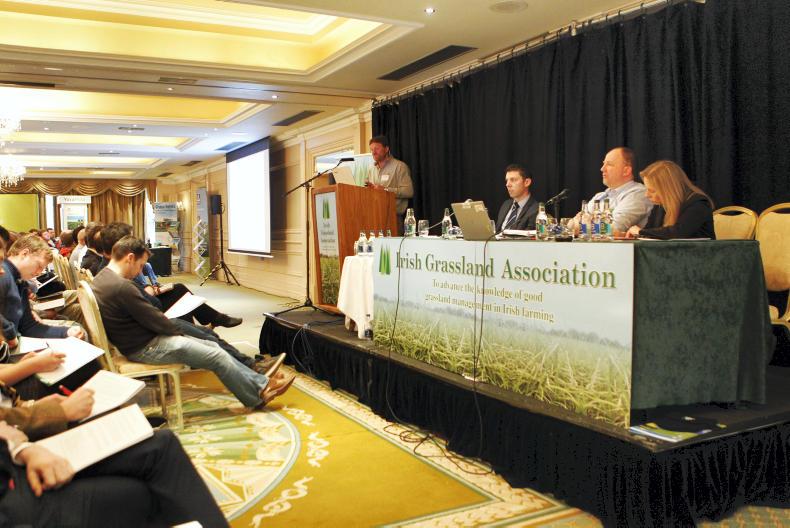Strategy was the topic of discussion at the opening session of the Irish Grassland Association dairy conference in Kilkenny today. Mayo dairy farmer and Nuffield scholar Sean O’Donnell outlined what he saw as the options for expanding milk production on fragmented holdings.
Sean’s conclusions were that building a milking parlour and setting up a second herd to be milked twice a day on an outside block was going to be the most profitable, even when all labour and debt repayment costs were factored in.
The other options he compared were robotic milking, once a day milking and zero grazing.
“Zero grazing has the lowest cost of entry but it results in a higher costs of production and ultimately the lowest profit,” Sean said.
Also speaking at this session were Chris Mossman, a dairy farmer from Wales who calves his herd later to match herd demand with grass growth. Because he calves later, he feels the speed of calving is more important - so he uses a significant amount of synchrony. This year, he calved 50% of his herd in just nine days.


High input herd
Karina Pierce from UCD Lyons Estate gave an update on the first year results of the high-input herd. The herd of high EBI Holstein Friesians were fed 1.3t of meal and produced 593kg of milk solids (305 day predicted). Submission rate was 91% and six week in-calf rate was 59% with 9% empty after 12 weeks.
Cashflow
At the final session, Monaghan-born New Zealand-based dairy farmer Olin Greenan summed up the reasons why he does a monthly cashflow;
we stopped capital repayments and started to build up a slush fund
“It gives me peace of mind when I know I have enough money to pay all creditors and have enough for drawings, it gives me control of costs and confidence in the business model.”
Olin is share-milking on a 480-cow farm in south Auckland with his wife Anna and two young boys. Olin is one of the few New Zealand farmers who stuck to his principles of pasture first during the high milk price years and as a result he had very little to adjust when milk price fell.
Don't borrow over too short a period and don't forget about grazing infrastructure says Patrick Gowing @IrishGrassland conference pic.twitter.com/8gGbH8am7X
— Aidan Brennan (@aibrenn) January 18, 2017
“We used the high payout to pay back debt but when the milk price was looking like it was going to drop we stopped capital repayments and started to build up a slush fund, which has been a huge help as we got through the last two years without increasing our debt levels," he said.






 This is a subscriber-only article
This is a subscriber-only article












SHARING OPTIONS: